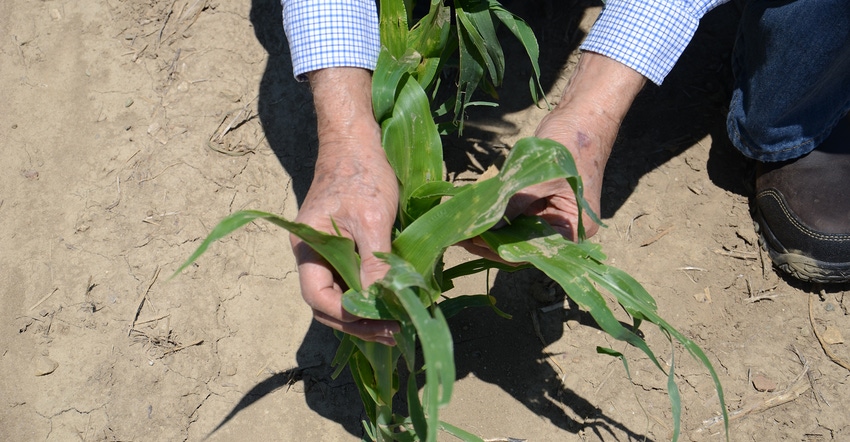
You’ve probably seen dirt or mud splashed on lower corn leaves after a rain and never given it a second thought. The next rain will wash it off.
It isn’t the fact that the mud is covering up leaf material that intercepts light that concerns Dave Nanda the most. It’s what could have come along for the ride when the mud splashed on the leaves that gives him heartburn.
“Several diseases which can cause foliar diseases in corn overwinter in the soil,” says Nanda, an independent crop consultant in Indianapolis. “Fungi from gray leaf spot and northern corn leaf blight, among others, are typically in the soil if you have grown corn in the field either continuously or even in a corn-soybean rotation.”
Southern rust and common rust won’t be there because they don’t survive Midwest winters. They need a live host, so they overwinter in Mexico. Whether they become a problem in any one season partially depends upon whether the fungi blow northward on storm winds earlier in the season, Nanda says.
Splash and go
It’s a different story for fungi that live in the soil, Nanda says. Raindrops cause tiny explosions as they hit bare soil, and particles of soil are dislodged and can land on corn leaves. Nanda recently found dirt splashed by rain on the upper leaves of five-leaf corn.
When splashing occurs, the soil particles can carry disease organisms with them. Once they land on leaves, whether infection occurs depends on whether conditions are favorable for the disease. If it’s too cool, too hot or too dry, the organisms may not be able to establish disease.
“What it does, however, is say that you ought to scout those fields later on where you saw mud on leaves early in the year,” Nanda says. “You want to catch and identify lesions of disease early. The goal is to protect the ear leaf from disease. Whether or not you may need a fungicide will depend upon several factors, including weather conditions and how resistant the hybrid planted in the field is to the disease.”
Cover crop angle
The past few seasons, Nanda has noticed less disease while walking fields in southeastern Indiana where farmers planted into cover crops. He doesn’t have research data to prove that cover crops result in less disease, but he does have a theory.
“I believe that the residue after the cover crop is terminated provides another layer of protection between the soil, where pathogens that cause disease live, and plant leaves,” he says. “When it rains, there is less likely to be as much splashing of mud on leaves, if any, if there is sufficient residue left from the cover crop. That is bound to help reduce exposure to disease pathogens at an early stage of growth.”
Nanda believes in this theory enough that he says if he were a researcher with graduate students, he would guide them to study this issue and attempt to determine with data if cover crops help limit disease. He believes it could be as important as working on new traits in corn.
About the Author(s)
You May Also Like




